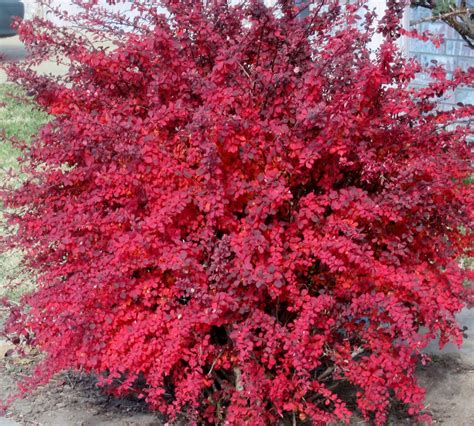red leaf barberry|japanese barberry growing conditions : 2024-10-06 Japanese barberry is a hardy deciduous shrub that can grow up to 6 feet tall with leaves that turn to attractive shades of red, orange, purple, and yellow in the fall. It . $54.95
0 · redleaf japanese barberry nursery
1 · redleaf japanese barberry for sale
2 · red leaf barberry shrub
3 · red barberry bush varieties
4 · pictures of japanese barberry shrub
5 · japanese barberry growing requirements
6 · japanese barberry growing conditions
7 · barberry red leaf japanese
Adidas x 18.1 fg yellow – Gs Boots . Brand new
red leaf barberry*******Japanese barberry is a hardy deciduous shrub that can grow up to 6 feet tall with leaves that turn to attractive shades of red, orange, purple, and yellow in the fall. It . Mist the barberry cutting occasionally to keep the medium moist but not wet. Test the cutting four to six weeks later by tugging gently on a leaf. If you feel resistance, the cutting has rooted. When it has .Purple Japanese Barberry, Red Leaf Japanese Barberry, Thunberg's Barberry, Red Barberry . Berberis thunbergii f. atropurpurea (Purple Japanese Barberry) is always a spectacular addition to the landscape, . If you think of barberry plants as primarily useful for defensive hedges, think again.Crimson Pygmy barberry (Berberis thunbergii 'Crimson Pygmy') is utterly gorgeous with deep crimson leaves that turn .
Red-Leaf Barberry Bush Red-Leaf Barberry is a deciduous shrub reaching up to 5-6 feet tall and about 4-5 feet wide. The branches are slender, spiny, and small, and the leaves are roundly oval in a deep red to purple color. The small, yellow flowers appear beneath leaves from April to May. Bright red berries can be found along stems from late fall through winter.FeaturesThis shrub features beautiful red-purple foliage throughout the season. Provide full sun for best leaf coloration. A fine choice for the landscape, offering yellow flowers and red fruit.UsesA classic favorite for landscape focal points. Best used in groups and shrub borders. Useful in small gardens where season long interest is needed.
How to plant barberry shrubs 'Berberis are generally of easy cultivation, thriving in sun or shade and in almost any soil that is not waterlogged,' says The Royal Horticultural Society.. Barberries are unusual in thriving in full sun and also in the shade of deciduous trees, although they develop better leaf color in at least some sunshine.Red Leaf Japanese Barberry is a dense multi-stemmed deciduous shrub with a more or less rounded form. Its relatively fine texture sets it apart from other landscape plants with less refined foliage. This is a relatively low maintenance shrub, and can be pruned at anytime. Deer don't particularly care for this plant and will usually leave it .Purple leaf barberry is a deciduous shrub variety in the Berberidaceae (barberry) family with striking purple burgundy foliage and red stems. This dependable accent plant is a rounded, dense shrub with numerous spiny branches and is easy to transplant. It grows 3 to 6 feet tall and 4 to 7 feet wide.Wonderful orange-red flowers. ‘William Penn’ barberry – A Berberis x gladwynensis barberry hybrid. Quickly grows to 4 feet (1¼ meter), then slows. Long, far-reaching fronds with cute yellow flowers. Learn more about dwarf barberry Barberry for defensive hedges. Barberry is often used to grow defensive hedges.
Red Leaf Japanese Barberry is a dense multi-stemmed deciduous shrub with a more or less rounded form. Its relatively fine texture sets it apart from other landscape plants with less refined foliage. This is a relatively low maintenance shrub, and can be pruned at anytime. Deer don't particularly care for this plant and will usually leave it .red leaf barberry japanese barberry growing conditionsNoted for its beautiful burgundy summer and fall foliage, Berberis thunbergii 'Crimson Pygmy' is a lovely, deciduous dwarf shrub with eye-catching, small, obovate, deep crimson leaves with a bronze tinge, which turn into brilliant red shades in the fall. Tiny, waxy, scented, pale yellow flowers appear in mid-late spring, but are insignificant in .
Berberis vulgaris, commonly known as barberry, is a shrub that grows tart, red berries. While the plant is native to parts of Europe, Africa, and Asia, it can now be found all over the world.A versatile low profile red-leafed barberry adaptable to many garden needs. An excellent mixed border plant to add foliage color. Also useful as a green color alternative for a small hedge. Use in Japanese garden designs near water features, or in wild, natural areas of your garden. Flower Color: Yellow : Foliage Color: Red : Companion Plants
red leaf barberryBerberis canadensis is one of only two simple-leaved or 'true' Berberis indigenous to the United States. The other is B. fendleri of the southwest U.S. The epithet "canadensis" literally means "Canadian" but was often used by 18th-century botanists to refer to any plants growing in northeastern North America.Noted for its beautiful burgundy summer and fall foliage, Berberis thunbergii 'Crimson Pygmy' is a lovely, deciduous dwarf shrub with eye-catching, small, obovate, deep crimson leaves with a bronze tinge, which turn into .
Berberis vulgaris, commonly known as barberry, is a shrub that grows tart, red berries. While the plant is native to parts of Europe, Africa, and Asia, it can now be found all over the world.
A versatile low profile red-leafed barberry adaptable to many garden needs. An excellent mixed border plant to add foliage color. Also useful as a green color alternative for a small hedge. Use in Japanese garden .
Berberis canadensis is one of only two simple-leaved or 'true' Berberis indigenous to the United States. The other is B. fendleri of the southwest U.S. The epithet "canadensis" literally means "Canadian" but was often used by 18th-century botanists to refer to any plants growing in northeastern North America. Barberry growing in pots appreciate a moist, but well-drained soil. Constantly soggy soil can and often will cause root rot or other harmful or deadly plant diseases. Therefore, we recommend a container with drainage holes and a quality potting soil or potting mix, or a 50/50 combination thereof, for planting.
Common Name(s): Japanese barberry, Thunberg's barberry, Red barberry. Growing Zone (USA / UK Hardiness): 4 to 8 / H6. Plant Details. Life Cycle / Plant Type: Perennial, deciduous shrub. Compact, bushy. Plant Height: 3 to 6 feet (90 to 180 cm). . Leaf Foliage: Spiny, small leaves. Obovate. Green, turning bright red or purple in fall. .Red Leaf Japanese Barberry is a dense multi-stemmed deciduous shrub with a more or less rounded form. Its relatively fine texture sets it apart from other landscape plants with less refined foliage. This is a relatively low maintenance shrub, and can be pruned at anytime. Deer don't particularly care for this plant and will usually leave it . 'Crimson Pygmy' is a 1- to 2-foot dwarf variety with reddish-bronze foliage. 'Gold Pillar' is a 3- to 4-foot plant with an upright growth habit and golden summer foliage that turns orange-red in fall. 'Orange Rocket' is a 4- to 5-foot plant with foliage that transitions from coral red in spring, to medium green in summer, to bright red-orange in .Beautiful reddish-purple foliage and red berries. Dense habit with thorny branches. Nice red fall color. Tiny, yellow flowers in late spring. Makes an excellent hedge. Hardy to -30°F Maximum Elevation: 7,500 ft.
The common barberry is an upright shrub that is native to Europe and Asia. . This is a multi branched shrub. Twigs have sharp, needle-like spines in groups of three beneath each leaf cluster. Spines are 1 to 2 cm (0.5 to 0.75”) in length. . Leaves turn bright shades of red, orange/yellow and/or purple in fall. Flowers. Its yellow flowers .Purple leaf barberry is a deciduous shrub variety in the Berberidaceae (barberry) family with striking purple burgundy foliage and red stems. This dependable accent plant is a rounded, dense shrub with numerous spiny branches and is easy to transplant. It grows 3 to 6 feet tall and 4 to 7 feet wide.FeaturesA charming dwarf barberry perfect for adding a dash of color or creating a miniature hedge. Compact, rounded form stays neat and tidy. Enjoy multi-season interest with small yellow flowers in spring followed by red berries that provide a great food source for winter birds. Plant in full sun to encourage the most intense red foliage .Japanse barberry is a dense, rounded shrub with numerous branches. It easy to transplant and dislikes wet feet. This plant has a medium to a fine texture. . Red/Burgundy Leaf Type: Simple Leaf Arrangement: Alternate Leaf Shape: Oblong Obovate Spatulate Leaf Margin: Entire Hairs Present: No Leaf Length: 1-3 inches Leaf Description: The root, bark and red berries of the barberry bush are often used for medicinal purposes. The red berries or fruit of the plant are edible and a rich source of vitamin C with a very sharp taste. The fruit, stem and root bark contain alkaloids, the most prominent being berberine. Laboratory studies in test tubes and animals suggest that .Purple leaf barberry is a deciduous shrub variety in the Berberidaceae (barberry) family with striking purple burgundy foliage and red stems. This dependable accent plant is a rounded, dense shrub with numerous spiny branches and is easy to transplant. It grows 3 to 6 feet tall and 4 to 7 feet wide.

FeaturesA charming dwarf barberry perfect for adding a dash of color or creating a miniature hedge. Compact, rounded form stays neat and tidy. Enjoy multi-season interest with small yellow flowers in spring followed .Japanse barberry is a dense, rounded shrub with numerous branches. It easy to transplant and dislikes wet feet. This plant has a medium to a fine texture. . Red/Burgundy Leaf Type: Simple Leaf Arrangement: .
The root, bark and red berries of the barberry bush are often used for medicinal purposes. The red berries or fruit of the plant are edible and a rich source of vitamin C with a very sharp taste. The fruit, stem and root bark contain alkaloids, the most prominent being berberine. Laboratory studies in test tubes and animals suggest that .Red-leafed Japanese barberry Photo by Richard Old, XID Services, Inc. www.insectimages.org. . Japanese barberry is deciduous, and it is one of the first shrubs to leaf out in spring. This is true for most of the deciduous barberries. The yellow flowers in spring are not very showy, because they are small and borne under the foliage, but the .
Plant images and details for Berberis thunbergii 'Atropurpurea' - Red-Leaf Japanese Barberry.
Japanese barberry 'Red Chief' A vigorous, spiny, deciduous shrub about 1.7m tall, with a graceful, upright to spreading habit, purple young stems and rather narrow, deep purple-red leaves, becoming brighter red in autumn. Spring flowers are red-tinged, pale yellow, followed by deep red berries in autumn

FeaturesFoliage remains a rich burgundy color throughout the summer, changing to black-red in autumn. A fine choice for the landscape, offering yellow flowers and red fruit. U.S. Plant Patent #9461.UsesA classic favorite for landscape focal points. Best used in groups and shrub borders. Useful in small gardens where season long interest is needed.Red Barberry may have difficulty thriving, and will drop leaves 🍃, without ample sunlight. Place it less than 3 feet from a south-facing window to maximize the potential for growth. Select your region to see how the current weather in your area affects the placement of Red Barberry in your home 🏡. Whether you have red barberry, American barberry, Japanese barberry, or any other shrub, the root system needs time before spring to become established. . Take a six-inch growth from the branch tip, cutting below a leaf node on the parent plant. Remove leaves and shoots at the bottom and leave greenery at the top.japanese barberry growing conditionsSome popular varieties include the Japanese Barberry (Berberis thunbergii) with deep red foliage or the European Barberry (Berberis vulgaris) flaunting a more traditional green hue. Each type brings its unique flair to the garden party, making it a true feast for the eyes. . angled cuts just below a leaf node. Usually 4 to 6 inches long . Back then there were few garden plants, and this new shrub, with yellow spring flowers, red fall leaves, and red berries in winter, soon became a big hit, and it was widely planted. That Japanese Barberry, Berberis thunbergii, had a lot of tricks up its sleeve, and since the first introduction that green plant has been transformed. Within a .
$30.00
red leaf barberry|japanese barberry growing conditions














